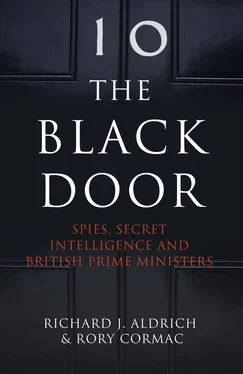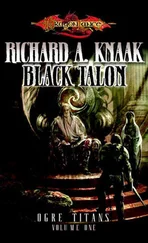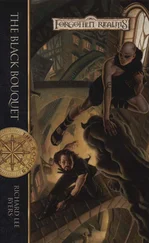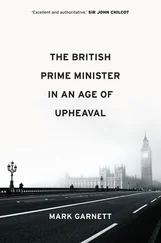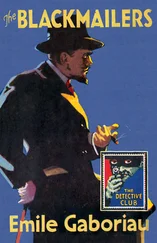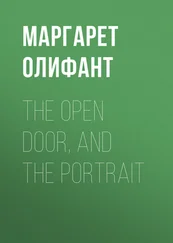The dirtiest diplomacy is talking to terrorists, kidnappers and insurgents. This has to be deniable, since even if governments are willing to admit their part, terrorists frequently are not, and all parties ultimately fear being perceived as ‘weak’. This can place prime ministers in a difficult position, potentially forcing them to mislead the House of Commons. Harold Wilson kept his MI6 back channel with the IRA incredibly secret – many in his own cabinet did not know what was going on. Similarly, Margaret Thatcher publicly insisted that Britain did not talk to terrorists, and yet, as under her predecessors Wilson, Heath and Callaghan, various back channels remained open. In fact, Thatcher was personally involved in some exchanges. She made handwritten comments on one statement sent to the IRA as part of negotiations over the hunger strikers in 1981, and personally amended and approved Britain’s negotiating position.26 Her successor, John Major, faced a similar dilemma. Despite stating in the House of Commons that he did not negotiate with terrorists, he had approved precisely that, and his emissaries were secret service officers whom the IRA regarded as ‘untouchable’. But when the secret talks leaked, Major and the IRA descended into a welter of accusation and counter-accusation, with each side publicising its version of the hitherto secret communiqués.
Bizarrely, even as Thatcher and Major talked to terrorists, they were also their top targets. Both came within inches of being eliminated by the IRA, and one of the darker stories of intelligence, security and 10 Downing Street is the ever greater level of protection required to prevent assassination. Margaret Thatcher, characteristically, had just finished rehearsing a speech with her private secretary, Robin Butler, at ten to three in the morning when a bomb destroyed a large part of the Grand Hotel in Brighton during the 1984 Conservative Party Conference. One minister recalled the security shambles in the immediate aftermath, as injured politicians made their way out of the rubble with barely a policeman in sight. Two IRA gunmen could have ‘got the whole Government as they blearily emerged’, and made their getaway unimpeded. The IRA also purposely eliminated two of Thatcher’s closest advisers, with the assassinations of Airey Neave in 1979 and Ian Gow in 1990, bracketing her arrival and her departure from office.27
As a result, Downing Street was turned into a fortress. Large reinforced black gates prevented public access. Harold Wilson had resisted elaborate gates when they were suggested in 1974, but now they arrived, together with armed policemen.28 Several levels below Downing Street, technicians were putting the final touches to ‘Project Pindar’, a command bunker deep beneath the Ministry of Defence on Whitehall to which selected denizens of Downing Street could retreat in times of peril, at a cost of £126.3 million.29
By 2005, threats against the life of the prime minister had become an almost daily occurrence. The intelligence warnings of assassination attempts often landed on the desk of David Blunkett, the home secretary, who observed with delightful sangfroid that these plots did not worry him unduly – unless they related to an event at which he was likely to be sitting next to Tony Blair. Towards the end of Blair’s administration, simply moving outside the Whitehall government complex became a problem. Alastair Campbell gazed at the vast prime ministerial convoy of armoured vehicles proofed against nerve gas, the motorcycle outriders stopping the traffic amid a cacophony of wailing sirens, and wondered how many votes were lost every time this baroque parade of vehicles took the prime minister to the airport.
The personal threat to the prime minister is at its worst overseas. In October 2001, Blair set off on a trip to Russia, India, Pakistan, Saudi Arabia and finally Egypt. The BBC ignored security guidance and announced the prime minister’s destinations to the world, thereby increasing security concerns. As a result, Blair’s entourage had to be ‘surrounded by outriders with machine guns and tanks carrying anti-aircraft missiles’.30 On their return to the UK, Blair’s team told the BBC director of news that Number 10 was ‘exasperated by their continued reporting of his movements’.31 Blair remains a high-profile target. In 2014, MI5 planted a listening device in the car of one terrorism suspect and listened in on his conversations for two weeks after searching the vehicle and finding Blair’s home address on a scrap of paper folded inside a Versace glasses case.32 MI5 had previously established covert surveillance of Ishaq Kanmi, the self-proclaimed leader of al-Qaeda in Britain. His stated aims included ‘the elimination of political leaders and capitalists Blair and Brown’.33 In the twenty-first century, British prime ministers value their intelligence and security services partly because they keep them alive.
No less worrying are the threats to visiting heads of state. Each premier on a state visit to Downing Street, whether from Russia, Israel, Sri Lanka or Saudi Arabia, has brought in his wake an exotic trail of would-be assassins. The grim prelude to every visit is the backstairs diplomacy of death. As the leaders make their way around London, they are shadowed by ambulances carrying copious supplies of their blood group. The most vexed discussions concern the intelligence precautions involved in each visit, with every drain and culvert along the routes taken by visiting dignitaries being searched for explosives. Defensive weaponry is an issue, with each American president asking to bring with him an increasingly formidable array of automatic weapons and ground-to-air missiles. George W. Bush was denied permission to bring an SUV containing an M134D mini-gun in an armoured pop-up turret. MI5 routinely regard the US president’s secret service as a more dangerous threat to the British public than potential assassins.34
Death has hovered over Downing Street for more than a century. While attacks and plots have become steadily more serious in recent years, enterprising amateurs have always abounded, and earlier prime ministers were more accessible to the public. On 28 August 1939, panic swept through a crowd of protesters immediately outside the door of 10 Downing Street when a London clerk called Laurence Hislam opened a small suitcase and scattered its contents, which resembled the deadly devices beloved of bearded bomb-throwing anarchists. Mayhem ensued, until the crowd realised that the ‘bombs’ were actually large black rubber balls inscribed with the message ‘Peace Conference Now’. Hislam was in fact a pacifist protesting against the mounting international crisis and the spectre of another major war in Europe. The police led him away, and despite his defence that he acted ‘in the cause of peace’, the court sentenced him to six months’ hard labour.35
No prime minister illustrates this interface between premiers and personal hazard more than Churchill. Britain’s wartime leader accepted the advice of the Special Operations Executive that assassinating Hitler would be counter-productive, since his strategy was increasingly incompetent and damaging to Germany. However, in 1943 Churchill did approve an assassination attempt against Mussolini, with female agents being dropped into Italy, together with aggressive kill missions against Rommel and other senior German generals. Meanwhile, lesser fascists were earmarked for mere bribery, with an initial £100,000 personally approved by Churchill and then passed over in a large bag to members of Franco’s circle on a Spanish golf course as an inducement to keep Spain out of the Second World War.36 Eden was appalled by the operation, but when more money was required for Franco, Churchill eagerly minuted in red ink: ‘Yes Indeed. WSC.’37
Читать дальше
